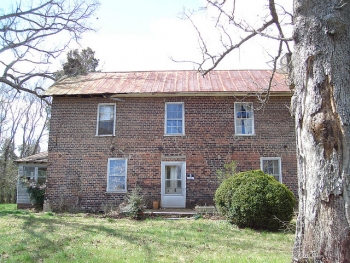If Your Solid-Walled Home Doesn't Have External Wall Insulation It's Time to Get Some

Most homes in the UK built after 1920 are cavity-walled constructions. These are external walls that are actually two parallel single-brick walls spaced about 5 cm to 10 cm apart. Since air is a good insulator, the air in the cavity between the two walls keeps the home’s heating from leaking out. With improved home insulation standards over the years, wall cavities are no longer left empty. They are filled with insulating material.
About one in three of homes in the UK were built prior to 1920 and aren’t equipped with cavity walls. Estimates by the National Insurance Association state that homes with solid brick walls can see 45% of their heat escape right through their walls. They recommend that every owner of a solid brick construction find an installation option message to use.
If you have solid external walls, you should explore your options in external wall insulation
Since solid external walls don’t have cavities to stuff insulation into, the insulation you pick needs to either go on the external surface or the internal surface. Whichever you pick, your energy savings are likely to be the same.
Applying insulation to the inner side of an external wall is typically cheaper. To cover the inside of every external wall on an average three-bedroom semidetached house is likely to cost about £6000. Applying insulation to the outer surfaces of the external walls of a house, on the other hand, is likely to cost about £10,000. The exact price you pay can depend not only on the kind of application you pick but also on the condition of your walls. If your walls are in poor shape, you may need to get extra repairs done before insulation can be applied. A solid-walled home that’s retrofitted with insulation can be even more energy-efficient than a cavity-walled home.
How do you decide whether to apply your external wall insulation to the outer surface or the inner surface?
Your budget is the first thing you need to consider. Applying insulation to the outer surface of every wall can turn out to be nearly twice as expensive as applying it to the inner surface. You may also need to think about how easy to access your external walls are. If they aren’t accessible without elaborate scaffolding, you may choose to treat the inner surface of your walls. Some people choose inner surface treatment for aesthetic reasons. They like the look of their external walls and don’t want to cover it over.
What to expect with outer surface insulation
Homeowners usually order external wall insulation when they experience severe heating problems or when they need to call a crew over to do some kind of other external restoration. They feel that they might as well get some external insulation done when they have a crew over.
To insulate your external walls with insulation, insulation workers will fix large sheets of insulating material on it. They will then cover it over with decorative finish. People use outer surface insulation for every kind of home style – Victorian, Georgian, Edwardian or anything else. Depending on how cold your area gets, the insulation tiles used will be between 5 cm and 10 cm thick. Insulation placed outside is usually more expensive because it needs to be able to resist weather damage.
What to expect with inner surface insulation
People don’t generally choose inner surface insulation if they can help it. Getting such work done can involve considerable disruption to life at home. The insulating crew arrives with large boards or rolls of insulating material. To make sure that the insulation sticks, they usually carefully go over your walls to find any areas of damage or weakness and repair them, too. They then attach the insulation to every inch of your external walls. While you can always call in the decorators to decorate over the insulation, you will see that your home has suddenly become slightly smaller with insulation – thanks to the inch or so that your new insulation has taken away.
Calling in the insulation installers
As with any crew that you might hire for an important home-improvement project, you should look for someone who is approved by the local authority. You can consult the Energy Saving Trust, the National Insurance Association or the British Board of Agrément.
